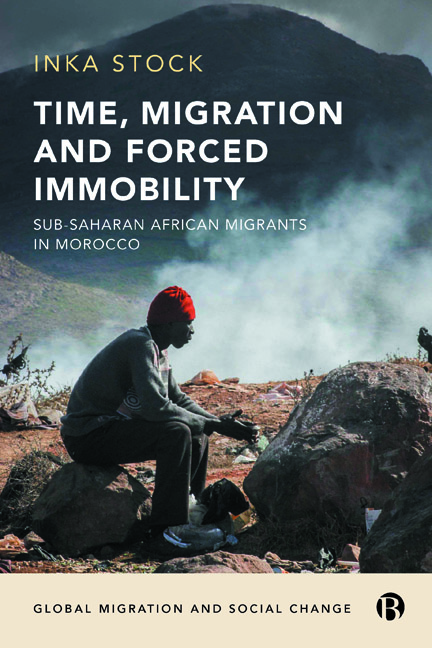Book contents
- Frontmatter
- Global Migration And Social Change
- Contents
- List of Figures and Tables
- Acknowledgements
- Series Preface
- 1 Introduction
- 2 EU Externalization Policies and their Impact on Migrants in Morocco
- 3 Travelling Adventures: Migration as an Existential Quest
- 4 Arriving in Morocco: Becoming Trapped in a Context of Uncertainty
- 5 Facing Time and the Absurd
- 6 Migrant Communities in Morocco
- 7 Waiting in Desperate Hope
- 8 Conclusion
- Bibliography
- Index
2 - EU Externalization Policies and their Impact on Migrants in Morocco
Published online by Cambridge University Press: 30 April 2022
- Frontmatter
- Global Migration And Social Change
- Contents
- List of Figures and Tables
- Acknowledgements
- Series Preface
- 1 Introduction
- 2 EU Externalization Policies and their Impact on Migrants in Morocco
- 3 Travelling Adventures: Migration as an Existential Quest
- 4 Arriving in Morocco: Becoming Trapped in a Context of Uncertainty
- 5 Facing Time and the Absurd
- 6 Migrant Communities in Morocco
- 7 Waiting in Desperate Hope
- 8 Conclusion
- Bibliography
- Index
Summary
Introduction
On 28 September and the night of 6 October 2005, hundreds of Sub-Saharan African migrants collectively attempted to climb the barbed wire fences of the two Spanish exclaves Ceuta and Melilla on the Moroccan border in a desperate attempt to cross the border. Many managed to reach Spanish ground but over 100 migrants were caught and severely injured when they fell from fences and got stuck in the barbed wire. Several migrants were hit by bullets from border guards and 11 migrants died during these events (Goldschmidt 2006, Schapendonk 2011). This was the first time that such a mass assault on the borders of Europe had occurred. The fact that it happened then was not a coincidence. In fact, it presented a desperate attempt on migrants’ side to circumvent the increasingly effective border controls which had been established by both the Moroccan government and the EU in the years preceding the event. This made it impossible for migrants to leave Morocco for Europe or return to their countries of origin.
The events had severe policy implications for both migrants and governments. On the one hand, they were followed by unprecedented levels of violence employed by Moroccan police and military forces against irregular migrants (MSF 2005, Yene 2010). There is also evidence that migrants were simply ‘banned’ from the territory in Morocco to ‘dissuade’ them from returning and attempting again to cross the border to Spain. Human rights organisations in Morocco had made public that the government organised mass deportations of migrants into the Algerian desert and to the southern provinces in the desert of Morocco during this time. On the European side, the events triggered the development of the first draft of the Global Approach to Migration (GAMM) by the European Commission and its rapid implementation (Collyer 2010). The GAMM emerges in subsequent years through three policy initiatives between European and African states which involve a great number of sending nations in Africa, so-called ‘transit countries’ in the Maghreb and destination countries in Europe. The initiatives are primarily geared to manage migration from South to North, with emphasis being put particularly on increased border control to prevent irregular migration (Collyer 2010).
- Type
- Chapter
- Information
- Time, Migration and Forced ImmobilitySub-Saharan African Migrants in Morocco, pp. 23 - 36Publisher: Bristol University PressPrint publication year: 2019



